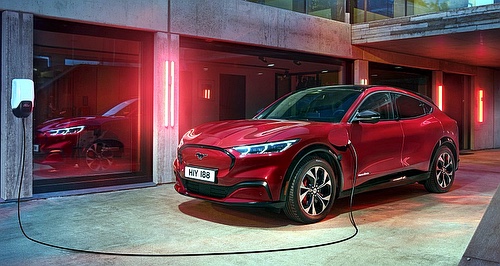News - FordFord names new EV unit Model eBlue Oval brand splits ICE and EV businesses; says agency sales model for EVs likely3 Mar 2022 By MATT BROGAN FORD Motor Company has announced that it will separate its internal-combustion engine and electric-vehicle businesses in a bid to boost profits.
The company said it planned to invest $US50 billion ($A68.8 billion) in the development of electric vehicles under its new Ford Model e business unit and that its legacy internal- combustion engine division would be renamed Ford Blue.
Ford said the two units, along with the recently created Ford Pro commercial-vehicles unit, would collaborate in some areas, but largely operate independently. It says the split was intended to not only increase profit margins, but to allow designers, developers, and engineers to adopt a more focussed approach to their work.
Ford estimates that electric vehicles will form 30 per cent of its global sales within five years, and 50 per cent by the end of the decade. In response to the forecast, Ford has boosted investment in its EV business by a further $US20 billion ($A27.4 billion) – for a total of $US50 billion ($A68.8 billion) – through to 2026.
The company said last May that it would spend $US30 billion ($A41.1 billion) on electric vehicle development and produce more than 2 million EVs by 2026. What’s more, 40 per cent of all vehicles sold by the Blue Oval would be electric powered by the year 2030.
“We’re literally splitting the business in half,” Ford Motor Company CEO Jim Farley told Automotive News. “Our legacy organisation has been holding us back. We had to change.”
Mr Farley said the new structure would allow Ford to achieve a 10 per cent total company adjusted pre-tax earnings margin by 2026, which is nearly double the 5.4 per cent figure it posted for 2021.
The company also announced wide-reaching changes to its dealer network, saying that it wants “a certain number” of retailers to “opt in” to selling EVs under an agency-type model. The plan includes dealers carrying no stock inventory, selling at non-negotiable prices, and being held to fewer facility requirements, Mr Farley said.
Mr Farley declined to say how many dealers he wanted to participate in the electric retail model. Ford plans to discuss the forthcoming changes with its dealers over the “next two months”.
“Our message to the dealers is ‘we’re betting on you’. Get ready to specialise,” he said.
Mr Farley will be CEO and president of Model e, while current president of the Americas and international markets group, Kumar Galhotra, will become president of Ford Blue.
Other executives who will assume new roles are: Doug Field, formerly of Apple – Model e chief EV and digital systems officer; Lisa Drake, current Ford North America COO – vice president of EV industrialisation at Model e; Marin Gjaja – Model e chief customer officer; Ford of Europe president Stuart Rowley – chief transformation and quality officer; and Hau Thai-Tang, chief product platform and operations officer – chief industrial platform officer.
“This new structure will enhance our capacity to generate industry-leading growth, profitability and liquidity in this new era of transportation,” Ford Motor Company CFO John Lawler said in a statement this week.
“It will sharpen our effectiveness in allocating capital to both the ICE and EV businesses and the returns we expect from them by making the most of the existing capabilities, adding new skills wherever they’re needed, simplifying processes, and lowering costs.
“Most importantly, we believe it will deliver growth and significant value for our stakeholders,” he said.
Ford shares rose 8.4 per cent on the news. The company plans to report earnings for its Model e, Ford Blue and Ford Pro units separately from next year.
Mr Farley said the decision did not spell the end of Ford’s ICE vehicle production and that it had not “given up” on the development of internal combustion engines.
“We still think more than half of our customers are going to be (opting for) ICE (powered vehicles) and they’re going to be (doing that) for a long time. It’s almost like our industry has kind of given up on that business.
“Even if the unit volume starts to fall over when mass adoption of electrification happens, in a lot of segments, that’s not going to happen, and we want to have a dedicated team to run that business with passion,” he told Automotive News.
Despite the claim, Ford said that it hoped to take out $US3 billion ($A4.1 billion) in structural costs from its Ford Blue business by 2026.  |
Click to shareFord articlesResearch Ford Motor industry news |














Facebook Twitter Instagram